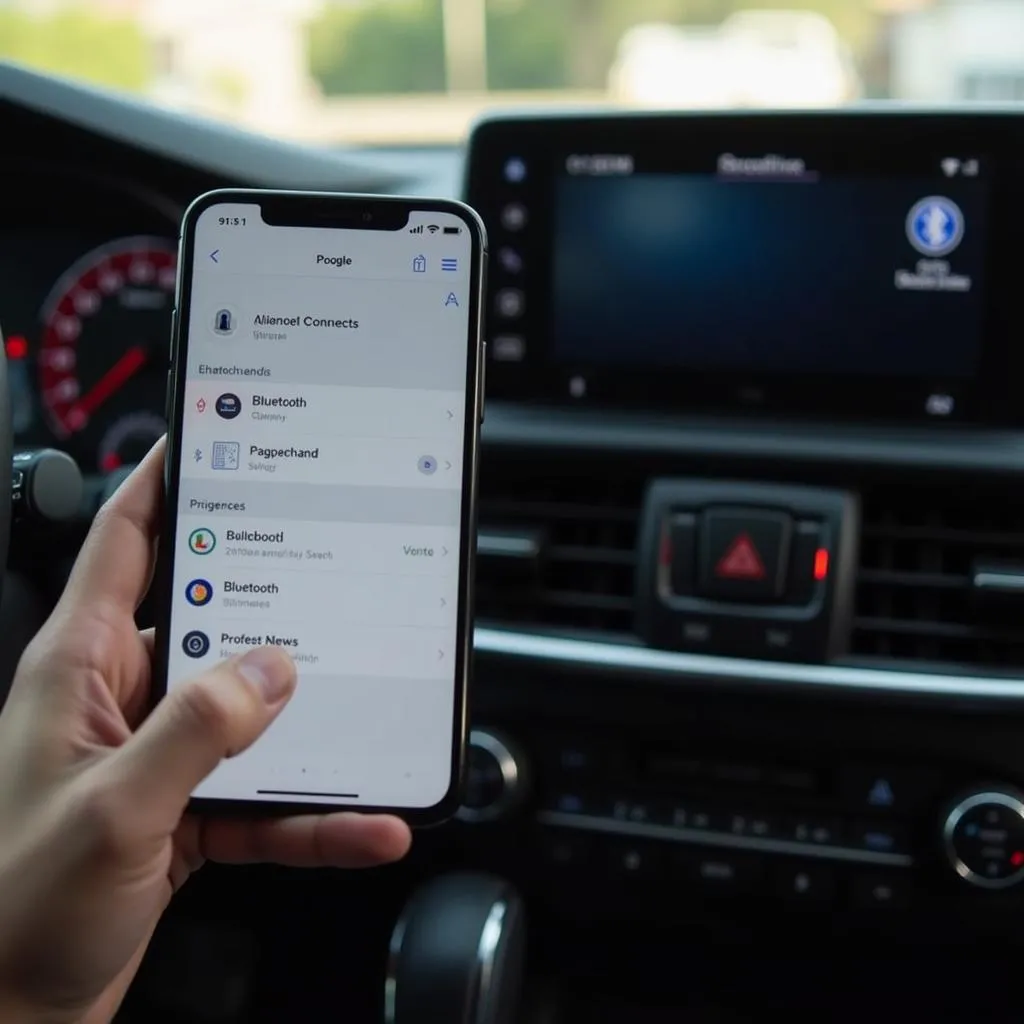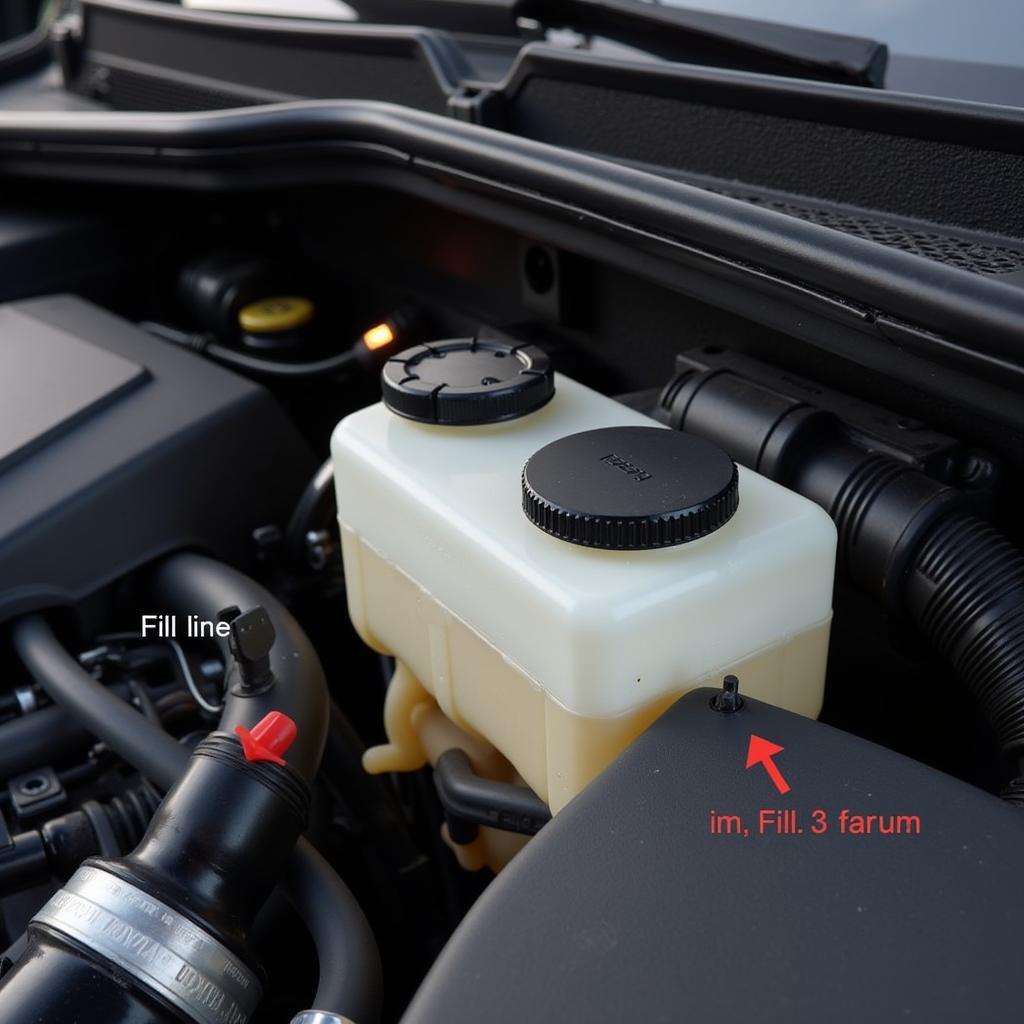The Pt Cruiser, a beloved classic with its retro charm, unfortunately, isn’t immune to battery drain issues. If you’re constantly dealing with a dead battery in your Pt Cruiser, you’re not alone. This comprehensive guide dives deep into the common culprits behind Pt Cruiser battery drain and provides practical solutions to get you back on the road.
Common Causes of Pt Cruiser Battery Drain
Several factors can contribute to battery drain in a Pt Cruiser. Identifying the root cause is crucial for an effective fix. Here are some of the most common reasons:
1. Parasitic Draw: The Silent Battery Killer
Parasitic draw refers to the gradual drain of your battery even when the car is off. This occurs when electrical components continue to draw power even when they shouldn’t.
Common culprits of parasitic draw in Pt Cruisers include:
- Faulty Interior Lights: A malfunctioning dome light, glove box light, or trunk light can stay on and drain your battery overnight.
- Malfunctioning Alternator: A failing alternator might not charge the battery properly, leading to a gradual drain.
- Bad Battery Terminals and Connections: Corroded or loose battery terminals can disrupt the flow of electricity, leading to inefficient charging and eventual drainage.
- Aftermarket Accessories: Improperly installed aftermarket accessories, such as stereos or alarms, can cause significant parasitic draw.
2. Weak or Old Battery: Age Catches Up
Just like any other car battery, Pt Cruiser batteries have a limited lifespan. Over time, they lose their ability to hold a charge effectively.
Signs of a weak or old battery:
- Slow Engine Crank: The engine takes longer to turn over when you start the car.
- Dimming Lights: Headlights and interior lights appear dimmer than usual, especially when idling.
- Battery Warning Light: The battery warning light on the dashboard illuminates.
3. Extreme Temperatures: Not a Fan of Extremes
Extreme temperatures, both hot and cold, can impact battery performance. Heat can accelerate the battery’s internal discharge rate, while cold temperatures can reduce its overall capacity.
Troubleshooting Pt Cruiser Battery Drain: A Step-by-Step Guide
Now that you understand the potential causes, let’s explore how to troubleshoot and fix Pt Cruiser battery drain issues:
1. Check for Parasitic Draw
-
The Ammeter Test:
- Disconnect the negative battery cable.
- Connect an ammeter in series between the negative battery terminal and the disconnected cable.
- With all accessories and lights off, observe the ammeter reading.
- A reading higher than 50 milliamps indicates excessive parasitic draw.
-
Identifying the Culprit:
- If excessive draw is detected, start pulling fuses one by one while observing the ammeter.
- A significant drop in the reading after pulling a specific fuse indicates the circuit where the parasitic draw originates.
- Consult your Pt Cruiser’s owner’s manual to identify the components within that circuit.
2. Inspect the Battery and Connections
- Visual Inspection: Look for signs of corrosion, cracks, or loose connections on the battery terminals and cables.
- Voltage Test: Use a multimeter to check the battery voltage. A fully charged battery should read around 12.6 volts.
- Load Test: A load test at an auto parts store can determine the battery’s overall health and capacity.
3. Address Other Potential Issues
- Check the Alternator: Have the alternator tested to ensure it’s charging the battery properly.
- Examine Interior Lights: Inspect all interior lights, including the glove box, trunk, and under-hood lights, for any that remain on when the car is off.
- Consider Extreme Temperatures: If you live in a region with extreme temperatures, consider using a battery blanket in winter or parking your car in a shaded area during summer.
When to Seek Professional Help
While some battery drain issues can be resolved with basic troubleshooting, it’s important to seek professional assistance if:
- You’re uncomfortable working with electrical components.
- You’re unable to identify the source of the drain.
- The battery drain persists even after addressing common issues.
Expert Insights
“One common mistake Pt Cruiser owners make is ignoring the early signs of battery trouble,” says Mark Stevenson, ASE-certified master mechanic. “Addressing issues like slow engine cranking or dimming lights promptly can often prevent more serious battery problems down the road.”
Conclusion: Keep Your Pt Cruiser Running Smoothly
Pt Cruiser battery drain is a solvable issue. By understanding the potential causes and following the troubleshooting steps outlined in this guide, you can often identify and fix the problem. Regular battery maintenance, including cleaning terminals and addressing issues promptly, can go a long way in preventing future battery drain headaches. Remember, a healthy battery is crucial for a smooth and enjoyable Pt Cruiser driving experience.
FAQs: Pt Cruiser Battery Drain
1. How long should a Pt Cruiser battery last?
A Pt Cruiser battery typically lasts between 3 to 5 years. However, driving habits, climate, and battery maintenance can all influence its lifespan.
2. Can I jump-start my Pt Cruiser if the battery is dead?
Yes, you can jump-start a Pt Cruiser with a dead battery using jumper cables and a working battery from another vehicle.
3. How much does it cost to replace a Pt Cruiser battery?
The cost of a Pt Cruiser battery replacement can vary depending on the battery brand, type, and labor costs. On average, expect to pay between $100 to $250.
4. Can a bad alternator cause my Pt Cruiser battery to drain?
Yes, a failing alternator can lead to battery drain. If the alternator isn’t charging the battery properly while driving, it will eventually become depleted.
5. Is it safe to drive my Pt Cruiser with the battery light on?
Driving with the battery light on is not recommended. It indicates an issue with the charging system, and continuing to drive could result in a complete battery failure and leave you stranded.


